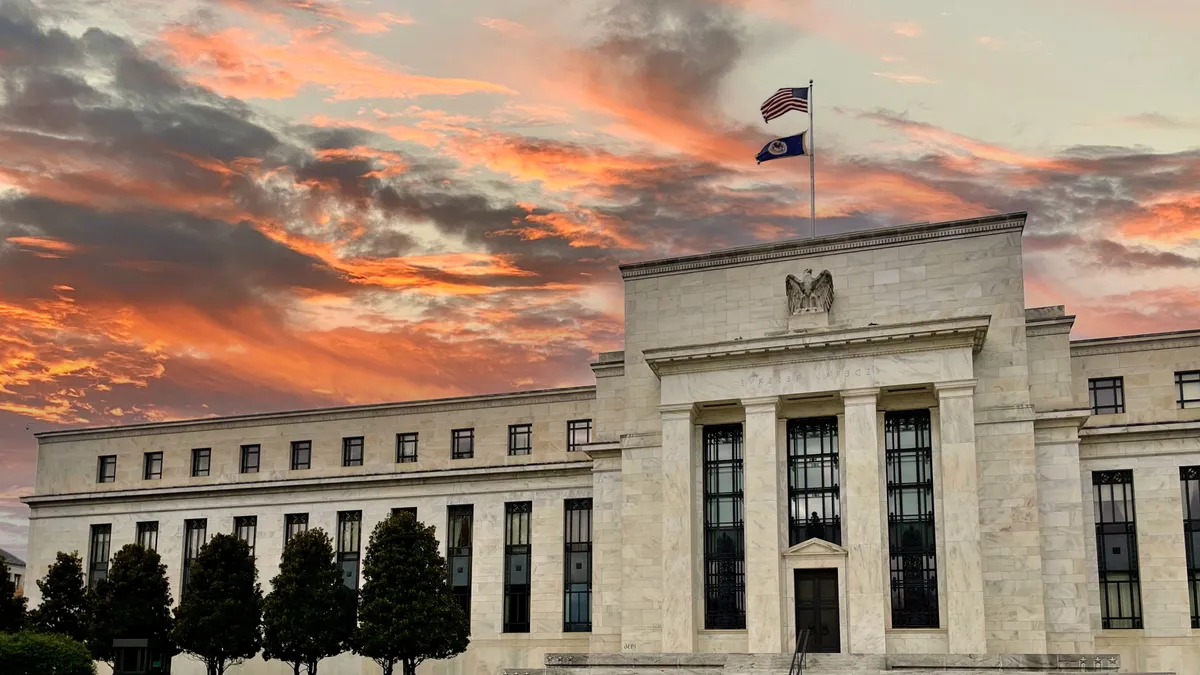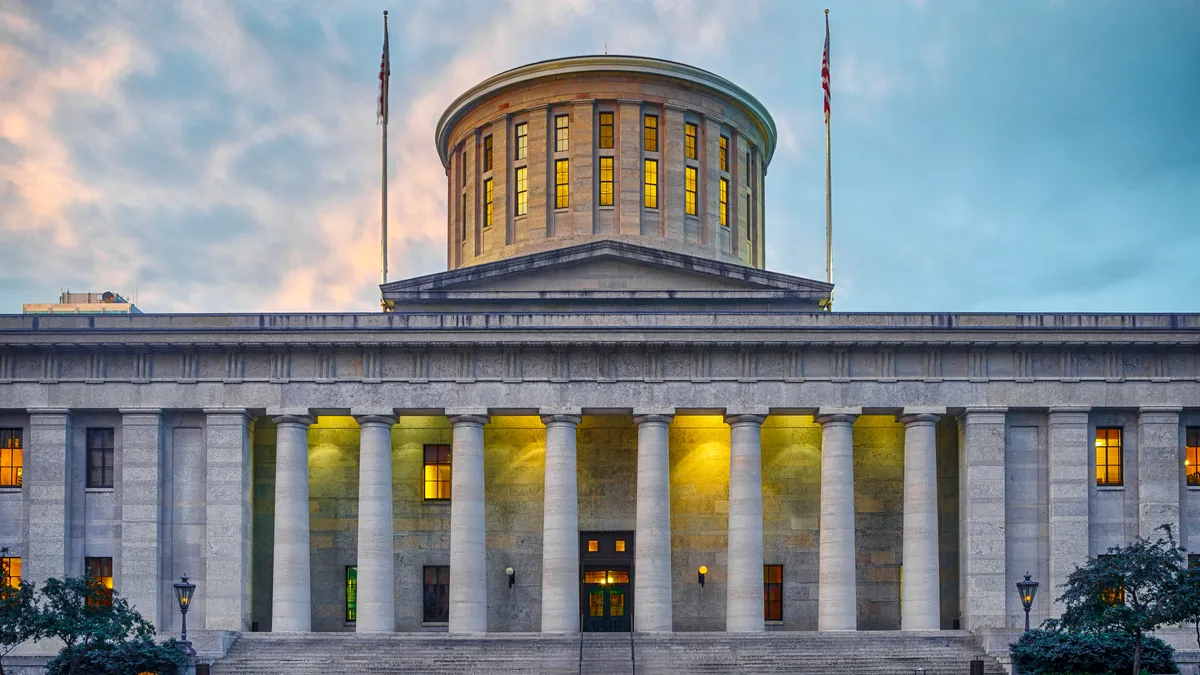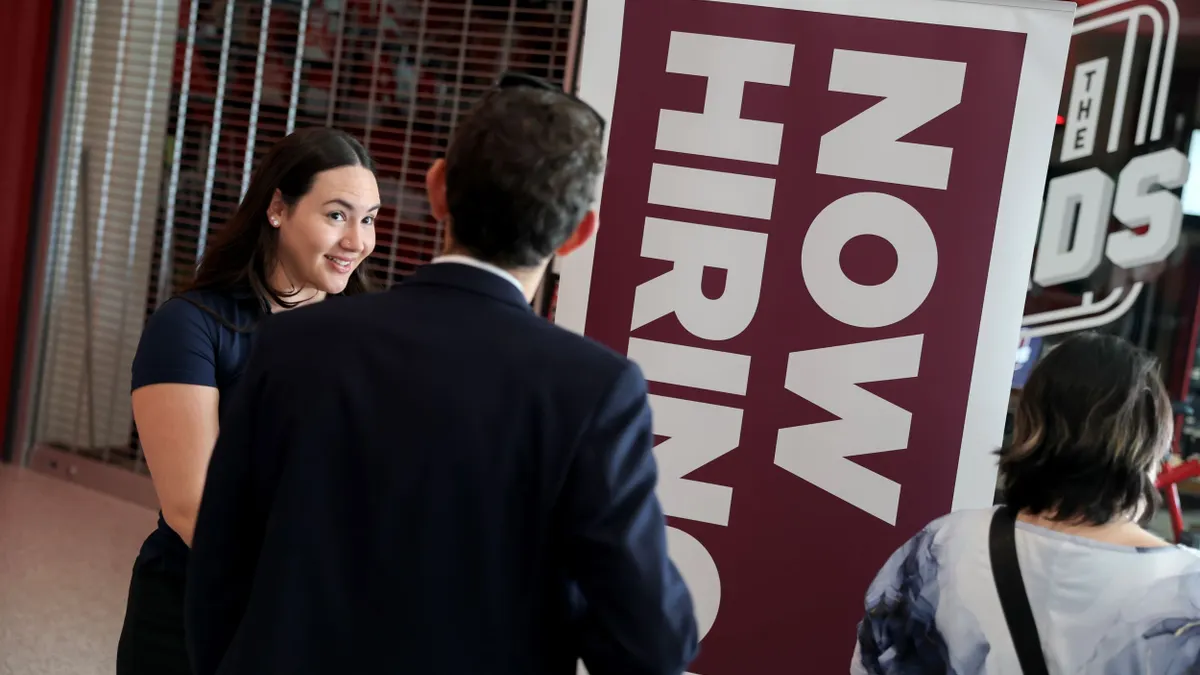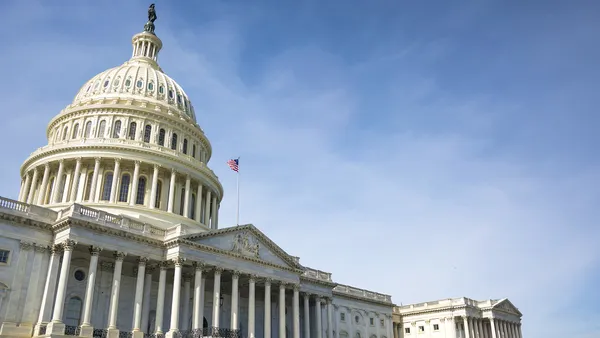Dive Brief:
- New York Federal Reserve Bank President John Williams said Monday that the labor market shows signs of weakening while noting that monetary policy is still restraining inflation after a quarter-point cut this month in the federal funds rate.
- The current 4%-to-4.25% range in the central bank’s benchmark interest rate “continues to be what we call restrictive monetary policy,” Williams said. The main rate “is putting, hopefully, downward pressure on inflation,” he said.
- Meanwhile, “the labor market is softening,” with unemployment gradually rising during the past year, he said. “So we have to do a balancing act,” Williams said, noting the challenge for policymakers of meeting their dual mandate to ensure both stable prices and maximum employment.
Dive Insight:
The impact from tariffs on inflation has so far undershot forecasts, Williams said, referring to estimates that import taxes have increased prices by roughly 0.3 percentage points to 0.4 percentage points.
“Underlying inflation outside of the goods affected by tariffs has continued to come down, but very slowly,” he said, adding that “it’s very hard to know exactly how the tariffs are affecting goods, how they’re affecting services.”
The Fed’s preferred inflation gauge — the personal consumption expenditures price index minus volatile energy and food prices — persisted at a 2.9% annual rate last month, the Bureau of Economic Analysis said Friday.
Efforts by policymakers to slow inflation to their 2% target have stalled for several months as the Trump administration imposed the highest U.S. tariffs in the 1930s.
While some Fed officials in recent months have favored easing policy, others have voiced more caution than Williams by noting an imperative to avert a resurgence of inflation.
“I continue to be worried about where we are from an inflation perspective,” Cleveland Fed President Beth Hammack said Monday. “I think we really need to maintain a restrictive stance for policy.”
The central bank probably will not curb inflation to 2% before the end of 2027 or early 2028, Hammack said in a CNBC interview.
“I continue to see that we have pressure in inflation, both in the headline, in the core, and particularly where I’m worried about it is, I’m seeing it in services,” she said.
St. Louis Fed President Alberto Musalem on Monday aligned with Hammack, saying that the central bank should “lean against” inflation.
“I do believe we need to tread cautiously because the room between now and the point where policy could become overly accommodative is limited,” he said during a panel at Washington University in St. Louis, according to Bloomberg News.
At the same time, Musalem said that he is “open minded to future potential reductions in interest rates.”
Fed officials in a median estimate on Sept. 17 forecast that they will make two, quarter-point reductions in the main interest rate before the end of 2025.














